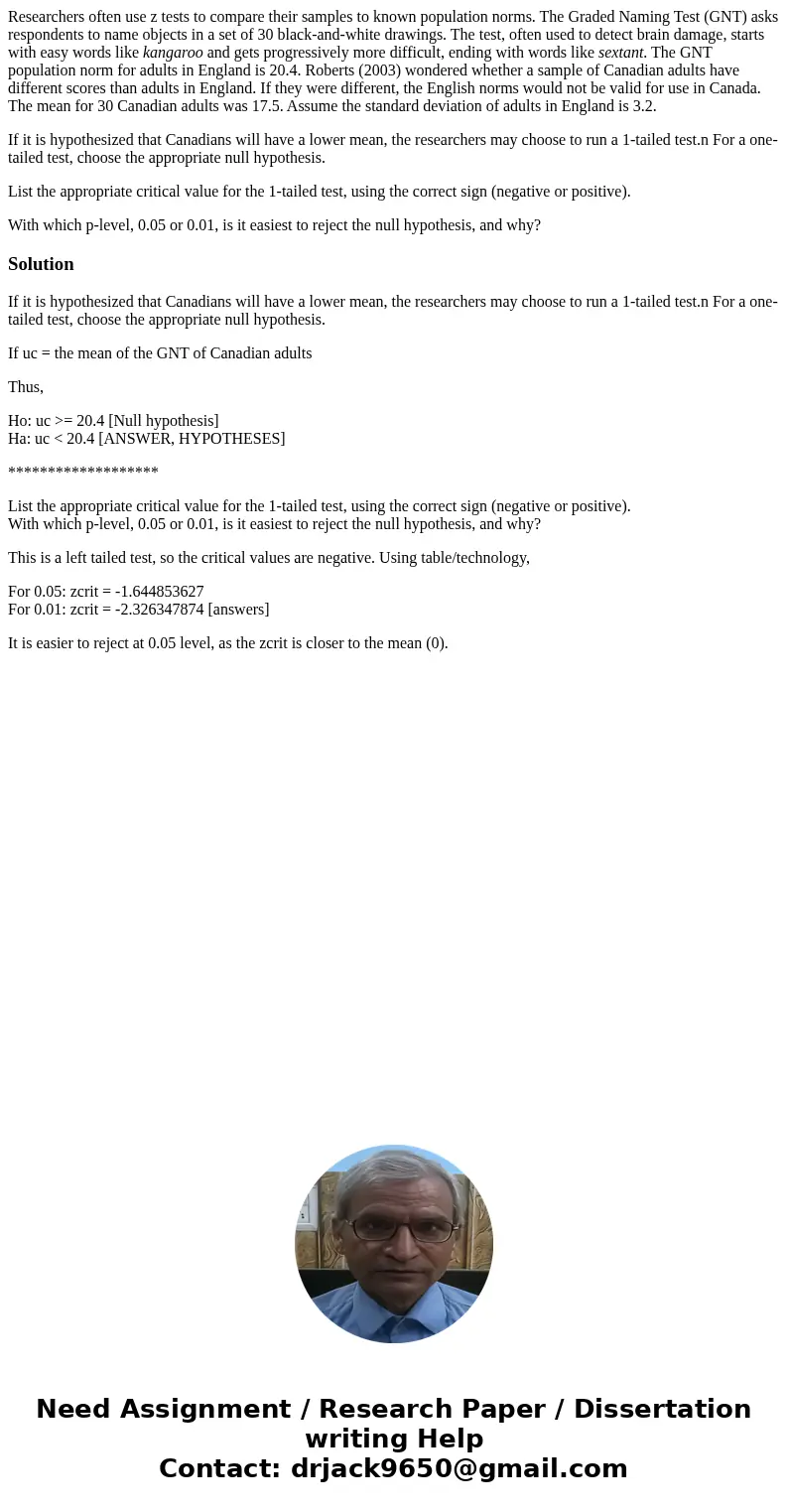Researchers often use z tests to compare their samples to kn
Researchers often use z tests to compare their samples to known population norms. The Graded Naming Test (GNT) asks respondents to name objects in a set of 30 black-and-white drawings. The test, often used to detect brain damage, starts with easy words like kangaroo and gets progressively more difficult, ending with words like sextant. The GNT population norm for adults in England is 20.4. Roberts (2003) wondered whether a sample of Canadian adults have different scores than adults in England. If they were different, the English norms would not be valid for use in Canada. The mean for 30 Canadian adults was 17.5. Assume the standard deviation of adults in England is 3.2.
If it is hypothesized that Canadians will have a lower mean, the researchers may choose to run a 1-tailed test.n For a one-tailed test, choose the appropriate null hypothesis.
List the appropriate critical value for the 1-tailed test, using the correct sign (negative or positive).
With which p-level, 0.05 or 0.01, is it easiest to reject the null hypothesis, and why?
Solution
If it is hypothesized that Canadians will have a lower mean, the researchers may choose to run a 1-tailed test.n For a one-tailed test, choose the appropriate null hypothesis.
If uc = the mean of the GNT of Canadian adults
Thus,
Ho: uc >= 20.4 [Null hypothesis]
Ha: uc < 20.4 [ANSWER, HYPOTHESES]
*******************
List the appropriate critical value for the 1-tailed test, using the correct sign (negative or positive).
With which p-level, 0.05 or 0.01, is it easiest to reject the null hypothesis, and why?
This is a left tailed test, so the critical values are negative. Using table/technology,
For 0.05: zcrit = -1.644853627
For 0.01: zcrit = -2.326347874 [answers]
It is easier to reject at 0.05 level, as the zcrit is closer to the mean (0).

 Homework Sourse
Homework Sourse